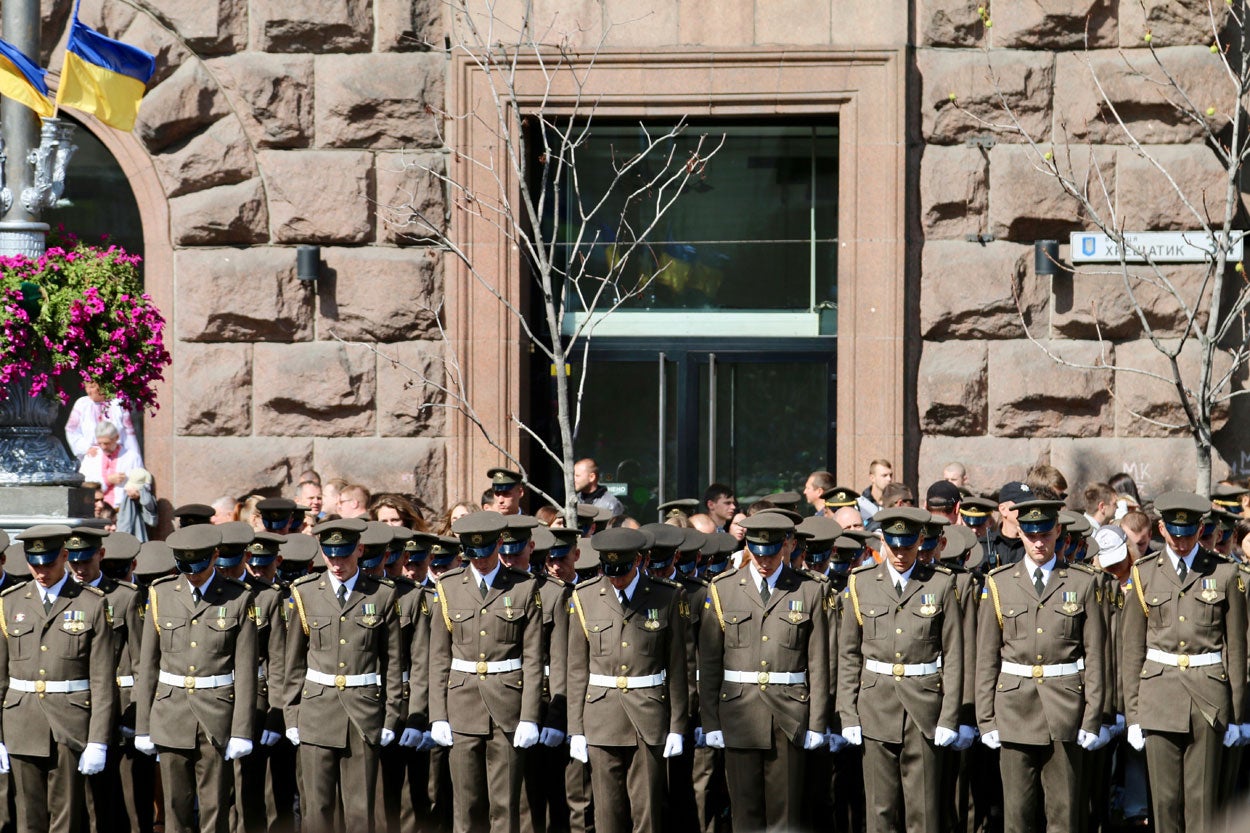by Caroline Glick
 Notably, the first foreign leader who called Hungarian Prime Minister Viktor Orban to congratulate him for his decisive victory in Hungary’s parliamentary elections Sunday was Israeli Prime Minister Benjamin Netanyahu.
Notably, the first foreign leader who called Hungarian Prime Minister Viktor Orban to congratulate him for his decisive victory in Hungary’s parliamentary elections Sunday was Israeli Prime Minister Benjamin Netanyahu.
Netanyahu called Orban and invited him to visit Israel. Netanyahu thanked Orban for “Hungary’s support for Israel in international forums.”
Orban’s Fidesz party won a landslide victory in the parliamentary elections, giving Orban a third consecutive term as Hungary’s prime minister and providing him with the two-thirds parliamentary majority to amend Hungary’s constitution.
His campaign rested on his pledge to block foreign-funded non-governmental organizations (NGOs) from undermining Hungarian sovereignty, including its ability to enforce its restrictions on immigration.
The main bogeyman in his campaign was U.S.-based billionaire and former Hungarian George Soros. Soros has underwritten pro-open borders, pro-immigration NGOs in Hungary, which Orban accused of working to subvert the Hungarian government’s ability to prevent unwanted immigrants from entering the country.
Since 2015, when German Chancellor Angela Merkel permitted hundreds of thousands of predominantly Muslim migrants to enter Europe from the Middle East, Orban has been one of the most outspoken opponents of her open borders policies, which he claims threaten Hungary’s national identity and its economy.
Last summer, Orban’s party submitted a bill that would levy a 25 percent tax on foreign donations to Hungarian-registered NGOs. The bill also required NGOs to reveal their funding sources and register as foreign agents if they received significant funding from foreign sources. The United Nations, the European Union, the Obama administration, and the liberal media in Europe and America all condemned the bill. Orban has also been condemned and censured by the EU for refusing to accept migrants from the Middle East in 2015 and 2016. He built a wall along Hungary’s southern border with Serbia to prevent the migrants from entering Hungary. He later built a border wall along Hungary’s border with Croatia for the same purpose.
In February, members of Orban’s party submitted an even tougher anti-NGO bill that includes provisions for barring foreigners who support illegal migration from entering the country, and compelling NGOs to receive licenses to operate from Hungary’s security services. With Fidesz’a two-thirds parliamentary majority, Orban is empowered to pass the bill into law.
Soros’s defenders argue that some of the Hungarian attacks against the pro-unfettered migration philanthropist, who is Jewish, have antisemitic undertones. A campaign backed by Orban included billboards with the statement, “Let’s not allow Soros to have the last laugh,” over a picture of Soros. Jewish groups claimed that the message inspires anti-Semitism.
According to Reuters, many anti-Soros posters were defaced with explicitly antisemitic graffiti along the lines of “stinking Jew.”
Last summer, Israel’s ambassador to Hungary issued a statement denouncing the anti-Soros campaign, claiming it “evokes sad memories but also sows hatred and fear,” in an apparent reference to the mass murder of most of Hungary’s 800,000 Jews during the Holocaust.
It is true that the anti-Soros campaign has included some anti-Jewish rhetoric. It is also true that Soros has underwritten a pro-immigration campaign that the vast majority of Hungarians oppose. They oppose it not because they hate Jews, but because they view unfettered immigration as devastating to their national interests — including their national identity, sovereignty, economy and national security.
Moreover, Soros has run similar campaigns against Israel by massively funding anti-Israel NGOs in Israel and throughout the Western world. According to NGO Monitor, an Israeli organization dedicated to researching the role NGOs play in delegitimizing Israel, through his Open Society Institute, Soros spends tens of millions of dollars annually underwriting anti-Israel NGOs.
J Street, the Jewish anti-Israel lobby formed in the U.S. in 2008, is a beneficiary of Soros’s philanthropy. The group was envisioned by Soros in a 2007 article he published in the New York Review of Books.
Another one of Soros’s beneficiaries is the viciously anti-Israel Human Rights Watch (HRW). HRW spearheaded the campaign in Hungary, alleging that the Orban-supported campaign against Soros was antisemitic. As NGO Monitor notes, Soros bailed out HRW after major donors abandoned the group amid allegations of profound anti-Israel bias and animus.
Netanyahu has accused Soros of funding the anti-Israel NGOs in Israel, the U.S., and Europe that have been running a massive campaign to prevent Israel from deporting illegal migrants from Africa.
Due to the central role that Soros plays in the political war being waged against Israel by the international left in Israel and throughout the West, Israel’s Foreign Ministry released a statement supporting the Orban-supported anti-Soros campaign in Hungary shortly after Israel’s ambassador in Hungary condemned the anti-Soros campaign.
In a “clarification” of the ambassador’s statement, Foreign Ministry Spokesman Emmanuel Nahshon stated, “In no way was the statement [by the ambassador] meant to delegitimize criticism of George Soros, who continuously undermines Israel’s democratically elected governments.”
Nahshon added that Soros funds organizations “that defame the Jewish state and seek to deny it the right to defend itself.”
A week after the statement and clarification were issued, Netanyahu visited Orban in Budapest. Orban vociferously condemned antisemitism and expressed profound regret for Hungary’s collaboration with the Nazis in annihilating Hungarian Jewry.
Orban said, “It is the duty of every Hungarian government to defend its citizens whatever their heritage. During World War Two Hungary did not honor this moral and political obligation. That was a crime, because we chose collaboration with the Nazis over the defense of the Jewish community. That can never happen again. The Hungarian government will defend all its citizens in the future.”
For his part, Netanyahu thanked Orban for his “important words” and praised him for his government’s opposition to what is commonly referred to as “the new antisemitism,” hatred of Israel.
Netanyahu said, “There is a new antisemitism expressed in anti-Zionism. That is delegitimizing the one and only Jewish state. In many ways, Hungary is at the forefront of the states that are opposed to this anti-Jewish policy and I welcome it and express the appreciation of my government.”
On Thursday Israel will mark Yom Hashoah, or Holocaust Remembrance Day, and mourn the genocide of a third of the Jewish people during the Holocaust. It is notable that as the day approaches, Netanyahu made a point of being the first foreign leader to congratulate Orban.
After the Holocaust, world Jewry coined the phrase “Never Again” to express its commitment to preventing all future attempts to destroy the Jewish people. That phrase, however, is often limited to combatting Nazi-type anti-Semitism.
Although Jew-hatred on the far right remains a significant threat, in Israel and in Europe many of the threats and attacks against Israel are carried out by Muslims. Leftist antisemitism is more prevalent in many states in Western Europe than right-wing antisemitism. And Israel’s strongest supporters in Europe, almost without fail, make their home on the political right.
In standing with Orban, Netanyahu demonstrated that for Israel, “Never Again” means standing against all forms of antisemitism with equal force.
And in standing with Orban, Netanyahu made clear that Israel bases its alliances on the actions of its allies. It supports those who support the Jewish state, and it opposes those who oppose it, regardless of ideological and partisan identities.










Recent Comments